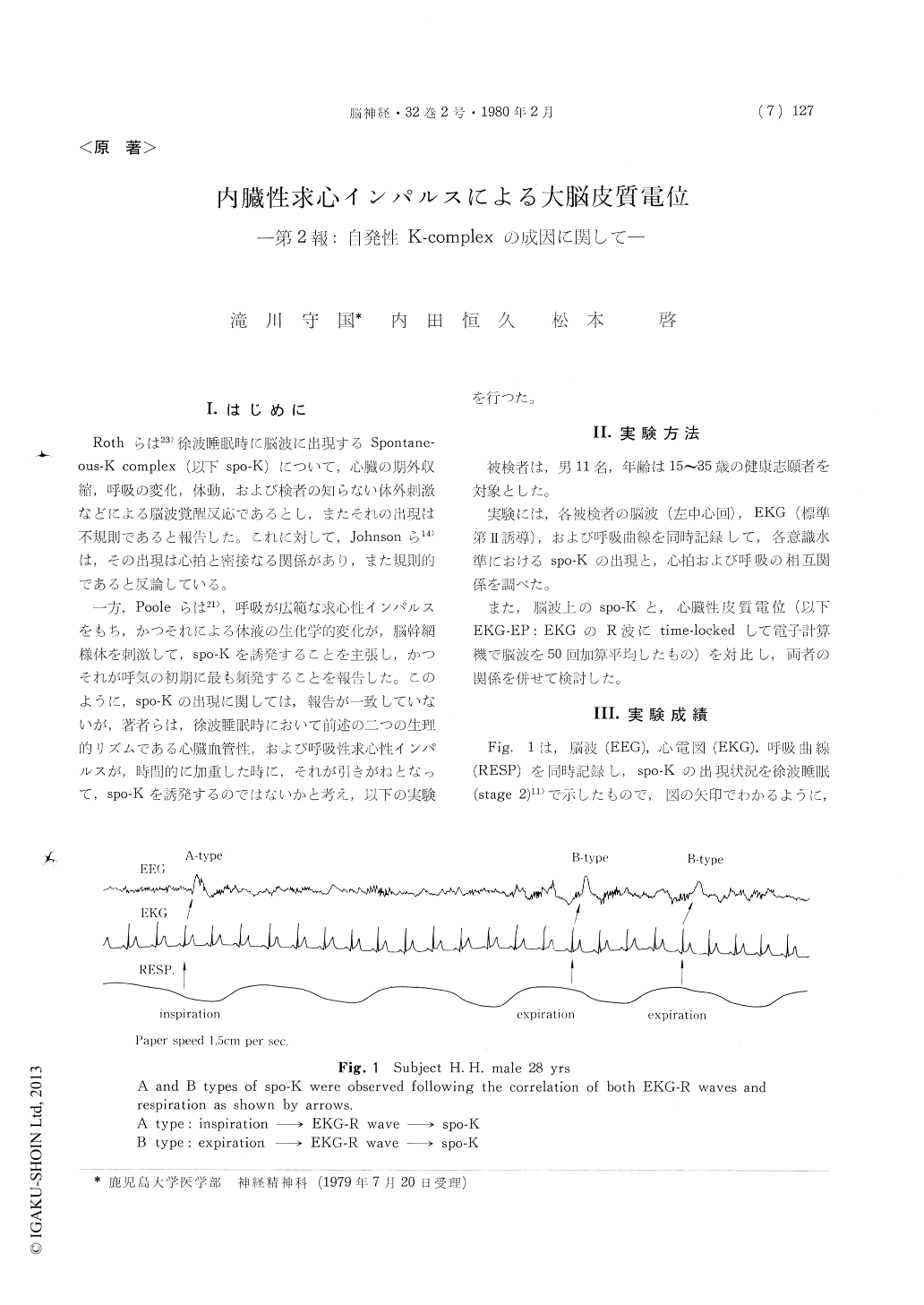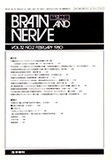Japanese
English
- 有料閲覧
- Abstract 文献概要
- 1ページ目 Look Inside
Ⅰ.はじめに
Rothらは23)徐波睡眠時に脳波に出現するSpontane—ous-K complex (以下spo-K)について,心臓の期外収縮,呼吸の変化,体動,および検者の知らない体外刺激などによる脳波覚醒反応であるとし,またそれの出現不規則であると報告した。これに対して,Johnsonら14)は,その出現は心拍と密接なる関係があり,また規則的であると反論している。
一方,Pooleらは21),呼吸が広範な求心性インパルスをもち,かつそれによる体液の生化学的変化が,脳幹網様体を刺激して,spo-Kを誘発することを主張し,かつそれが呼気の初期に最も頻発することを報告した。このように,spo-Kの出現に関しては,報告が一致していないが,著者らは、徐波睡眠時において前述の二つの生理的リズムである心臓血管性,および呼吸性求心性インパルスが,時間的に加重した時に,それが引きがねとなって,spo-Kを誘発するのではないかと考え,以下の実験を行つた。
For this study, spontaneous K-complex (spo-K) during slow wave sleep (stage 2) were observed on eleven normal subjects ranged for 17 to 37 years of age. And the cardiac and respiratory cycles of two physiological rhythms were simultaneously recorded with EEG to investigate the occurrences of spo-K.
1) The spo-K occurrences time-locked to EKG-R waves during both inspiration and expiration were found to have triple peak latencies of distri-bution such as 200-300, 400-600 and 800-900 msec.respectively (analytic time: 1000 msec.).
2) As above mentioned, these triple peak laten-cies of spo-K were corresponded respectively with those of computer-averaged cortical potentials time-locked to EKG-R waves such as Nw, Nx and Ny which were simultaneously recorded.
3) The types of spo-K were divided into three groups such as A, B and C types. A and B types of spo-K were attributed to interaction of cardio-vascular and respiratory afferent impulses respecti-vely. Otherwise, C type of spo-K was attributed to other unknown visceral afferent impulses or unknown brain mechanism.
4) Spo-K appeared during sleep corresponding with both Hiccup and EKG in a 28-year-old epi-leptic patient with hiccup.
In our studies, we made special attention of cardiorespiratory nervous system aimed at the gene-sis of spo-K occurrences.

Copyright © 1980, Igaku-Shoin Ltd. All rights reserved.


